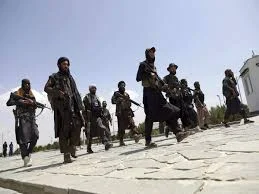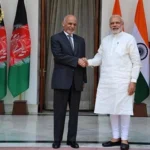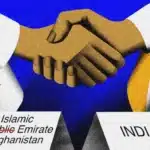Hegemony in the lexicon of International Relations refers to a state’s domination of an entire International system. And when the said phenomenon is confined to a particular region, it constitutes ‘Regional Hegemony’, which implies the domination of a specific region by a state. To put it bluntly, when a country in a particular region attains the position where it can influence the foreign policies of other countries in the region, it constitutes regional hegemony. Now by holding the Indian foreign policy contours in the region against the aforementioned definition of regional hegemony, it becomes clear like a sunny day, that India is or at least aspires to become a regional hegemon as hinted at by Taliban India Ties.
Since its inception in 1947, India has developed hegemonic ambitions which are reflected in its respective foreign policy doctrines such as Nehru’s modified version of the Monroe Doctrine, and the famous Indira Doctrine. These doctrines have been relentlessly pursued by the respective Indian governments irrespective of party affiliations as a matter of faith.
In the wake of these doctrines, throughout history, India has pulled several countries in the region into its sphere of influence which includes Nepal, Bhutan, Sri Lanka, Bangladesh, and Afghanistan in the pre-with drawl phase. It has done so by employing various tools such as coercion and mainly by economic assistance. Consider the case of Afghanistan in this regard.
Taliban India Ties in the Post-Withdrawal Phase
In the pre-withdrawal phase, India had contributed 3 billion$ in various projects to Afghanistan, making it one of the region’s largest providers of development assistance to Afghanistan.
However, the said economic assistance was never meant to assist or develop Afghanistan’s economy, rather than it was used to influence the latter’s foreign policy. Ashraf Ghani’s hawkish foreign policy towards Pakistan was mainly the outcome of the billion-dollar investments India made in Afghanistan. It is pertinent to mention that the fruits of these billion dollars investments never reached the common Afghan citizenry. The said pattern has even made its way into the post-withdrawal phase.
When the Taliban ascended to the throne in Kabul last year, it was widely believed that India had lost the leverage in Afghanistan, and Afghanistan under the Taliban may not be acceptable to India. However, soon India reestablished its presence in Afghanistan by actively engaging the Taliban to begin a new chapter of Taliban-India ties. In fact, the miserable condition that ensued with the Taliban takeover in Afghanistan came as an opportune moment for India to pursue once again his hegemonic ambitions. To put it simply, well aware of the fact, that cash-strapped Afghanistan under the Taliban is in dire need of economic assistance and International recognition, India, by leveraging its economic clout, and political reach is once again trying to influence the foreign policy of Afghanistan. For instance, just recently, the Indian Ministry of External Affairs in a press release warns Afghanistan of the consequences if the latter joins the China-Pakistan Economic Corridor (CPEC).
Our response to media queries regarding participation of third countries in CPEC Projects:https://t.co/ma8tupeZYI pic.twitter.com/PYtzvYczNY
— Randhir Jaiswal (@MEAIndia) July 26, 2022
Given the fact, that CPEC may serve as a game changer for Afghanistan, a landlocked country, and may help it to stand on its own feet economically, one wonders why India does not want Kabul to join it? It is perhaps, that in line with the behavior of a typical hegemon, India does not want Afghanistan to stand on its own feet and wants the latter to become forever dependent on India. It can only be achieved by holding back the development of Afghanistan, which is exactly what India hints at with the recent statement.
Your go-to editorial hub for policy perspectives and informed analysis on pressing regional and global issues.





Add a Comment